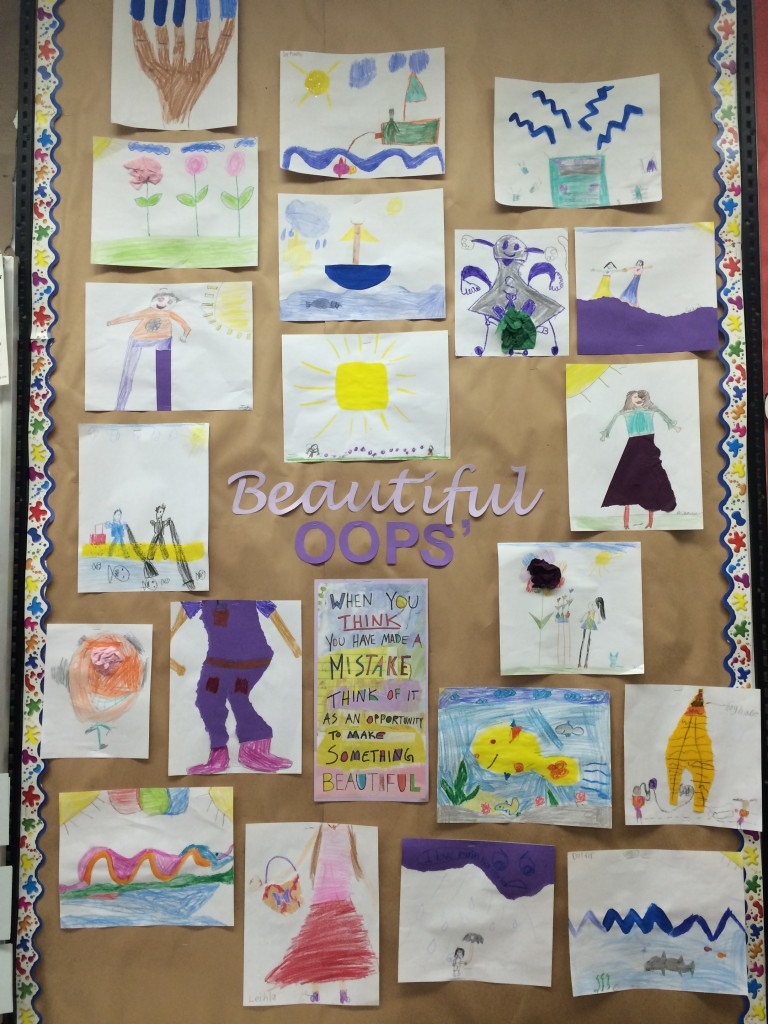“When you think you have made a mistake, think of it as an opportunity to make something beautiful.” – Barney Saltzberg
During my practicum, many of my young students were anxious about making mistakes. It was particularly evident in art, when students would ask for two or three new pieces of paper to get their creation “just right.” I also realized that students had a tendency to replicate my models as opposed to transferring the ideas to their own creative pieces. While I recognize the importance of practice in learning, I cringed at the amount of paper that was being recycled and desired to nurture the creativity I knew my students had within them. After talking to a fellow teacher candidate, I was directed to the book Beautiful Oops by Barney Saltzberg and knew this was a creative way to address my students’ needs.
I began my lesson by taking a piece of ripped paper out of the class recycling bin and asked the students, “If this happened to your paper, how many of you would want a new piece?” Immediately, 23 hands shot into the air. I took this as an opportunity to show how mistakes are okay and imperfections can be turned into something beautiful. I hung the paper on the board and used the rip to form the mouth of an alligator. As I drew, I could see students’ perceptions begin to change as they looked in awe at my creation. That being said, I still wanted them to connect to the idea of reframing mistakes as works of art. I described how sometimes when we do art in Grade 2, we make mistakes – we may draw a line in the wrong place or the paint may make a funny squiggle we were not expecting. I asked for a student volunteer to draw a line on the whiteboard. I then looked at the line and asked the class “What does this look like to you?” I was surprised at the variety of suggestions that arose: a boat, a surfboard, a hockey stick, a tail. After our discussion about the beauty of mistakes, I gave each student an “oops” (crumpled of paper, paint stains, etc.) from which they were to create something. The freedom provided in this activity nurtured student creativity – I was impressed by my class’ imagination and their ability to see something beautiful in something we considered mistakes before.

See if you can spot the original oops’!